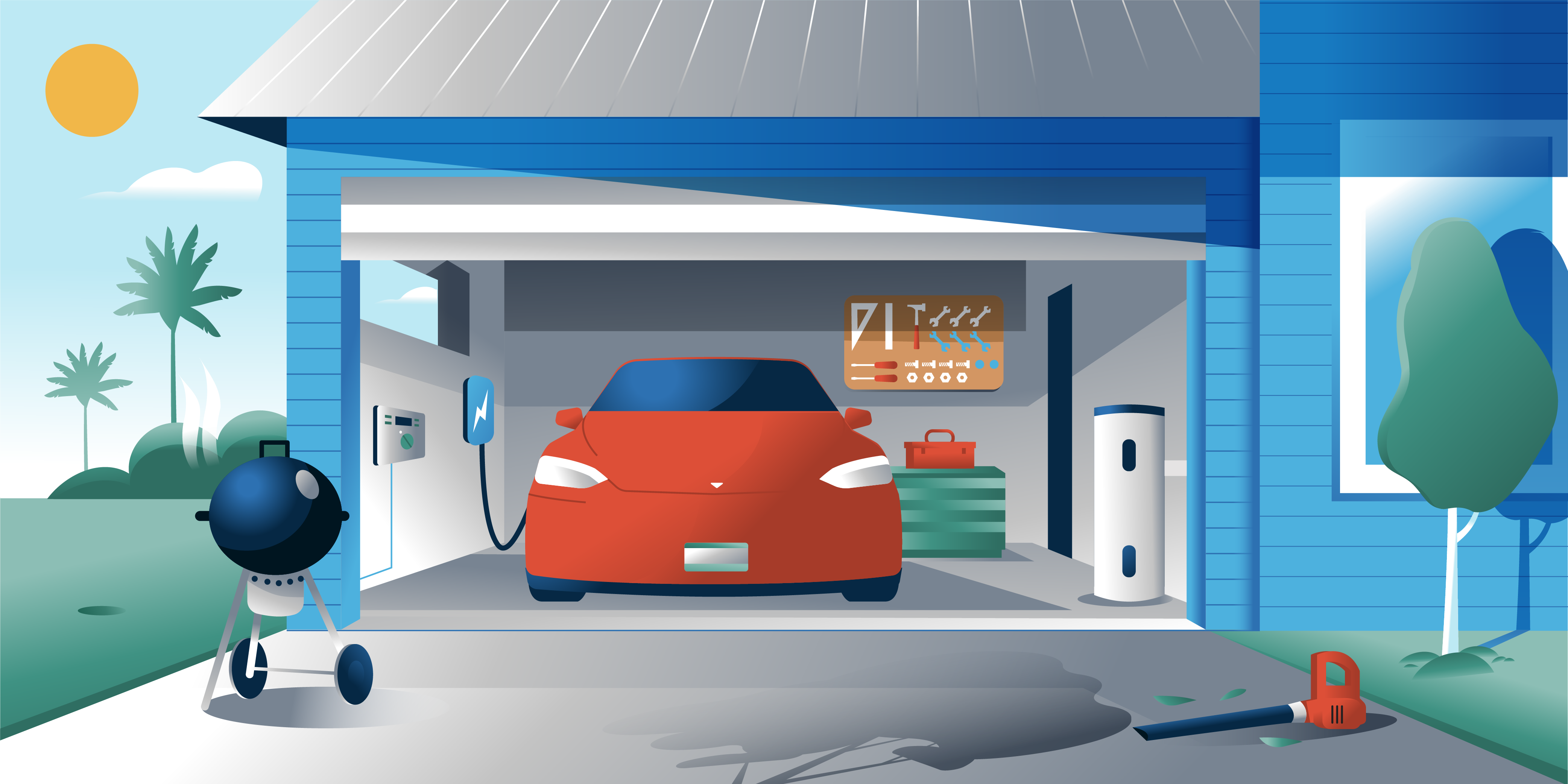






































































































































































































































































Prepare multiple meals in batches and store in the refrigerator or freezer. Batch cooking will save you prep time during the week and reduce the load on your appliances.






Free Alerts: Sign up to get free voice, text or email notifications when your monthly electric or water bill exceeds a set value, or get weekly bill-to-date alerts.

Daily Usage Graph: From your jea.com account, track your energy and water use with a simple graph loaded with valuable stats.

JEA MyBudget: Our levelized payment program evens out your monthly bill by taking a rolling average of your last 12 bills. This makes your payment about the same each month.

If you do keep items in your refrigerator or freezer, adjust their temperature settings to the highest (coldest) levels to reduce the risk of spoilage during a power outage.
Once the height of the storm passes and weather reports indicate it is safe, JEA immediately enters the restoration phase of our emergency operations. Our Restoration 1-2-3 process is designed to assess and repair our facilities and restore power across our 900-square-mile service territory as quickly and safely as possible.
Learn the phases of Restoration 1-2-3 and download our fact sheet to include in your emergency supply kit:
Evacuating? Turn off water at your home’s main service valve.
Check to see if your home is vulnerable to hurricane tidal surge flooding. The City of Jacksonville’s storm surge map gives you a general indication of the extent of flooding that might be experienced from various hurricane categories.
Stay tuned to local news reports and heed mandatory evacuation orders when they are issued, before storm conditions arrive.
JEA's Restoration 1-2-3 process assesses and repairs critical infrastructure and restores power across our service territory as quickly and safely as possible.
If you’re arriving home following an evacuation, safety experts recommend you turn off the electricity at the circuit breaker before entering to avoid any possible electrical hazards due to flooding. Enter with caution, avoid touching any electrical equipment, and contact a contractor or electrician if there is any sign of flooding or potential electrical danger.
Ever wonder why your neighbors have power and you don’t? A single street may be served by different sections of the electric grid – known as circuits – each of which provides electricity to a different group of homes on that street. So it’s not uncommon for neighborhoods to experience a mixture of power availability.
JEA crews focus on restoring power to these circults during Phase 2 of our Restoration 1-2-3 process. To report your outage, call (904) 665-6000 or visit jea.com/outage.
While JEA is responsible for removing downed electric lines caused by tree damage on your property, the homeowner is responsible for removing downed trees on private property, including those leaning on structures.
For trees, limbs and other debris obstructing roadways, please call the City of Jacksonville’s Department of Public Works at (904) 630-CITY.
Learn more about tree damage and debris removal following a storm.


Prepare multiple meals in batches and store in the refrigerator or freezer. Batch cooking will save you prep time during the week and reduce the load on your appliances.














Free Alerts: Sign up to get free voice, text or email notifications when your monthly electric or water bill exceeds a set value, or get weekly bill-to-date alerts.

Daily Usage Graph: From your jea.com account, track your energy and water use with a simple graph loaded with valuable stats.

JEA MyBudget: Our levelized payment program evens out your monthly bill by taking a rolling average of your last 12 bills. This makes your payment about the same each month.











If you do keep items in your refrigerator or freezer, adjust their temperature settings to the highest (coldest) levels to reduce the risk of spoilage during a power outage.

Once the height of the storm passes and weather reports indicate it is safe, JEA immediately enters the restoration phase of our emergency operations. Our Restoration 1-2-3 process is designed to assess and repair our facilities and restore power across our 900-square-mile service territory as quickly and safely as possible.
Learn the phases of Restoration 1-2-3 and download our fact sheet to include in your emergency supply kit:

Evacuating? Turn off water at your home’s main service valve.





Check to see if your home is vulnerable to hurricane tidal surge flooding. The City of Jacksonville’s storm surge map gives you a general indication of the extent of flooding that might be experienced from various hurricane categories.
Stay tuned to local news reports and heed mandatory evacuation orders when they are issued, before storm conditions arrive.



JEA's Restoration 1-2-3 process assesses and repairs critical infrastructure and restores power across our service territory as quickly and safely as possible.

If you’re arriving home following an evacuation, safety experts recommend you turn off the electricity at the circuit breaker before entering to avoid any possible electrical hazards due to flooding. Enter with caution, avoid touching any electrical equipment, and contact a contractor or electrician if there is any sign of flooding or potential electrical danger.







Ever wonder why your neighbors have power and you don’t? A single street may be served by different sections of the electric grid – known as circuits – each of which provides electricity to a different group of homes on that street. So it’s not uncommon for neighborhoods to experience a mixture of power availability.
JEA crews focus on restoring power to these circults during Phase 2 of our Restoration 1-2-3 process. To report your outage, call (904) 665-6000 or visit jea.com/outage.

While JEA is responsible for removing downed electric lines caused by tree damage on your property, the homeowner is responsible for removing downed trees on private property, including those leaning on structures.
For trees, limbs and other debris obstructing roadways, please call the City of Jacksonville’s Department of Public Works at (904) 630-CITY.
Learn more about tree damage and debris removal following a storm.